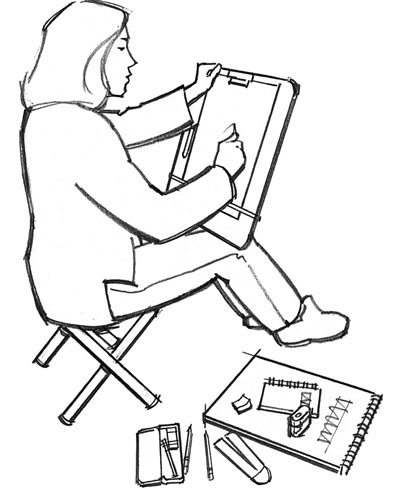Introduction
Do you remember when you got out your crayons and drew pictures as a child? Now maybe you are proudly displaying your children's artwork on the refrigerator door. You love their pictures because you can see their unique expression in the art, even if it looks more like a Picasso than a Rembrandt. You were just as proud of your own artwork at one time but somewhere along the road of life you began to doubt your artistic abilities. Our belief is that everyone is an artist, and that includes you!
The skills necessary for drawing are not limited just to pencil and paper but can be used in other art forms. When you draw, you are interpreting what you observe from your own perspective. With the principles in this book, you will develop your observational skills, learn the proper tools to use, apply different techniques to your drawing and make use of some of the tricks professionals use every day.
You will learn more if you get out your drawing materials and become an active participant rather than if you just passively read through this book. The material is written to be used again and again. By doing the exercises more than once you will be able to witness the improvement of your artwork.
We hope you will regain that childlike passion for doing art and learning without critiquing yourself harshly. We won't make you hang it on the fridge, but we do suggest you save your artwork because it will show your progress and increase your confidence as you go.
- Pencils
- Pencil extender
- Erasers
- Angle ruler
- Pencil box
- Small sketch pad
- Large drawing pad
- Drawing board
- Pencil sharpener
You Need Only a Few Materials to Draw
All you really need is a pencil and some paper, but a few other tools will make drawing easier wherever you go. See the following sections for more explanation of drawing materials.
Your Own Art Studio
With a few supplies, create your own drawing studio so you can work anywhere. Put your new studio in the park or in your living room. Sit down and rest the bottom edge of the drawing board on your knees. Use one hand to prop the drawing board and use the other hand to draw. Sit next to the subject, comparing your drawing to your subject as you work.

